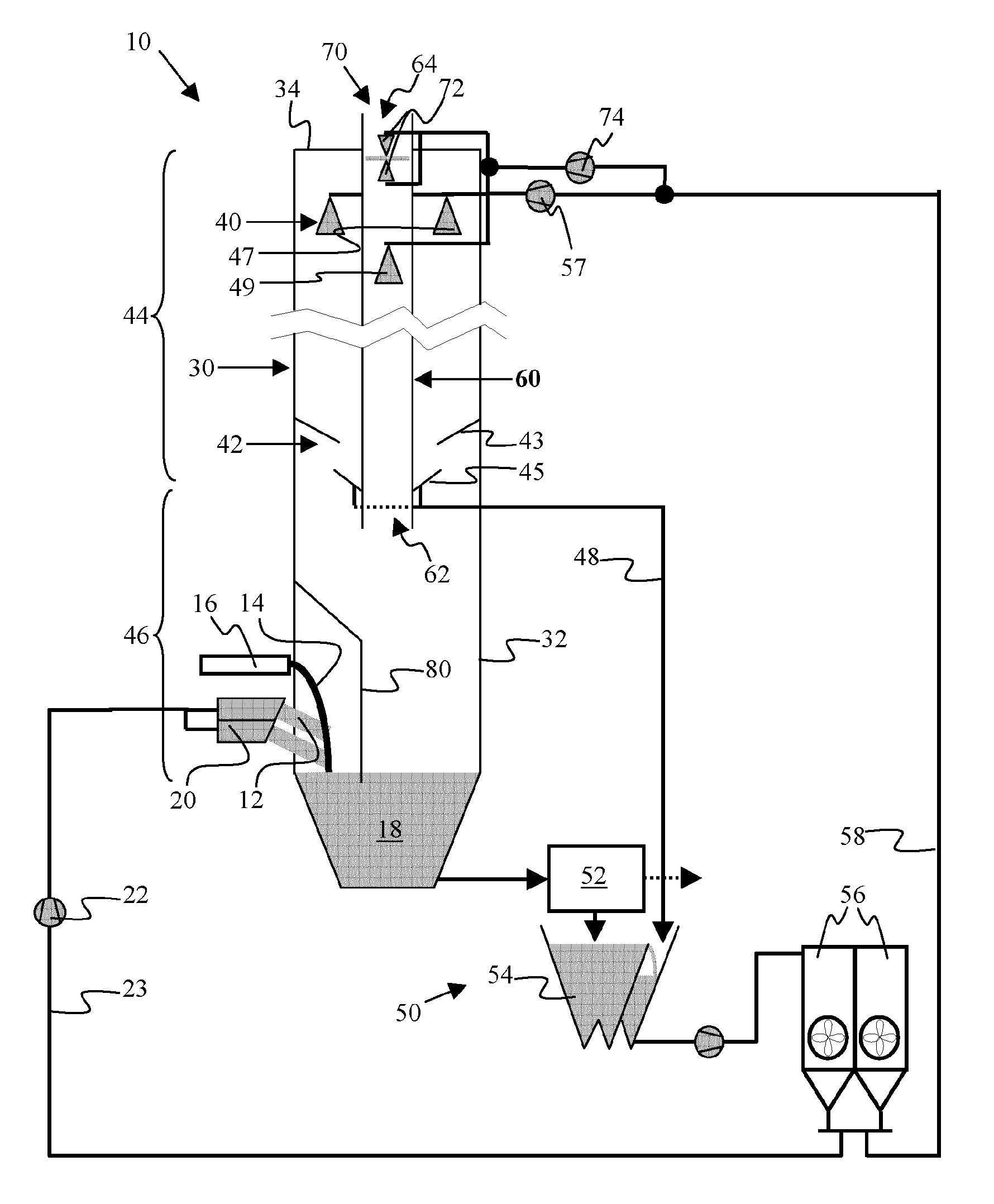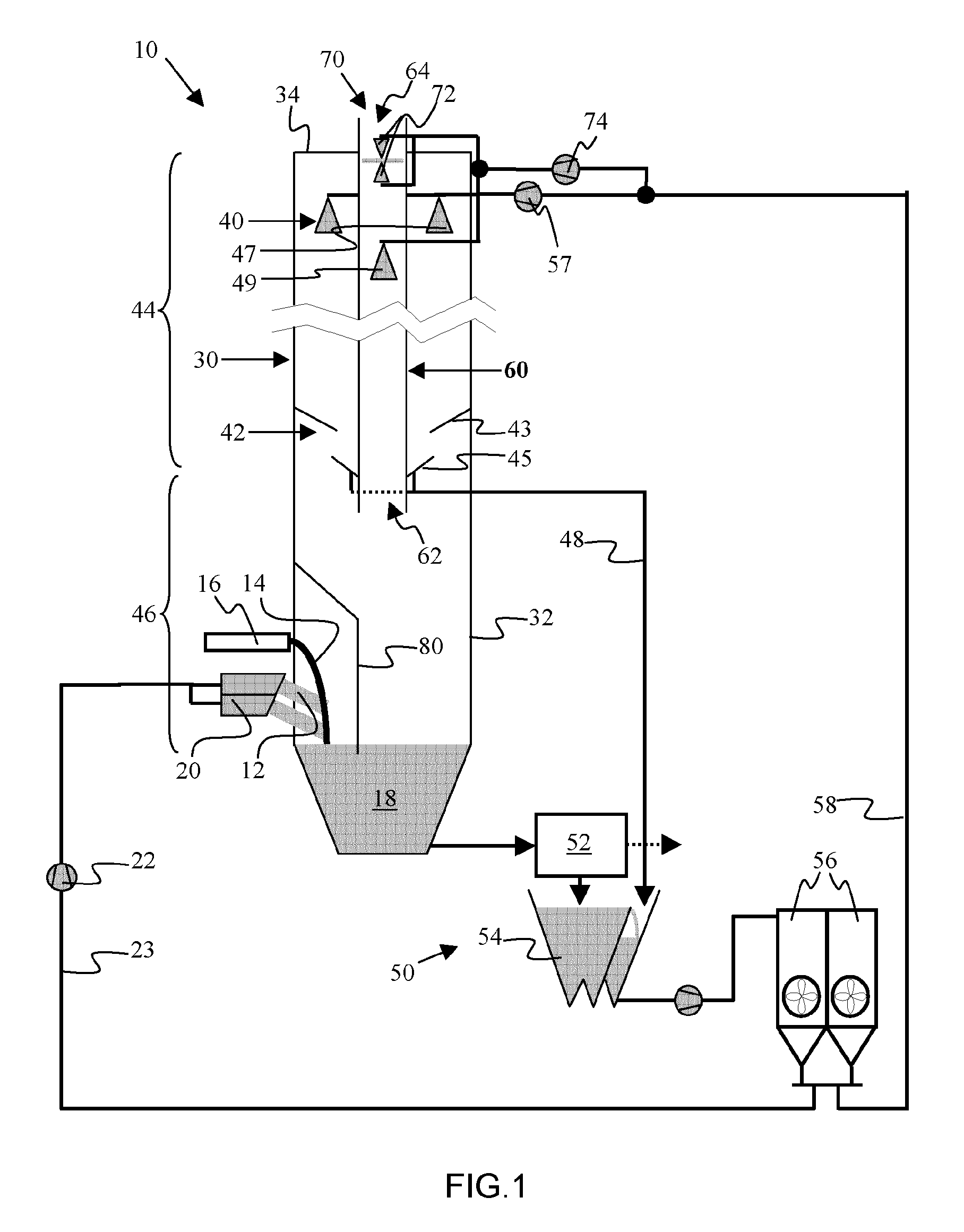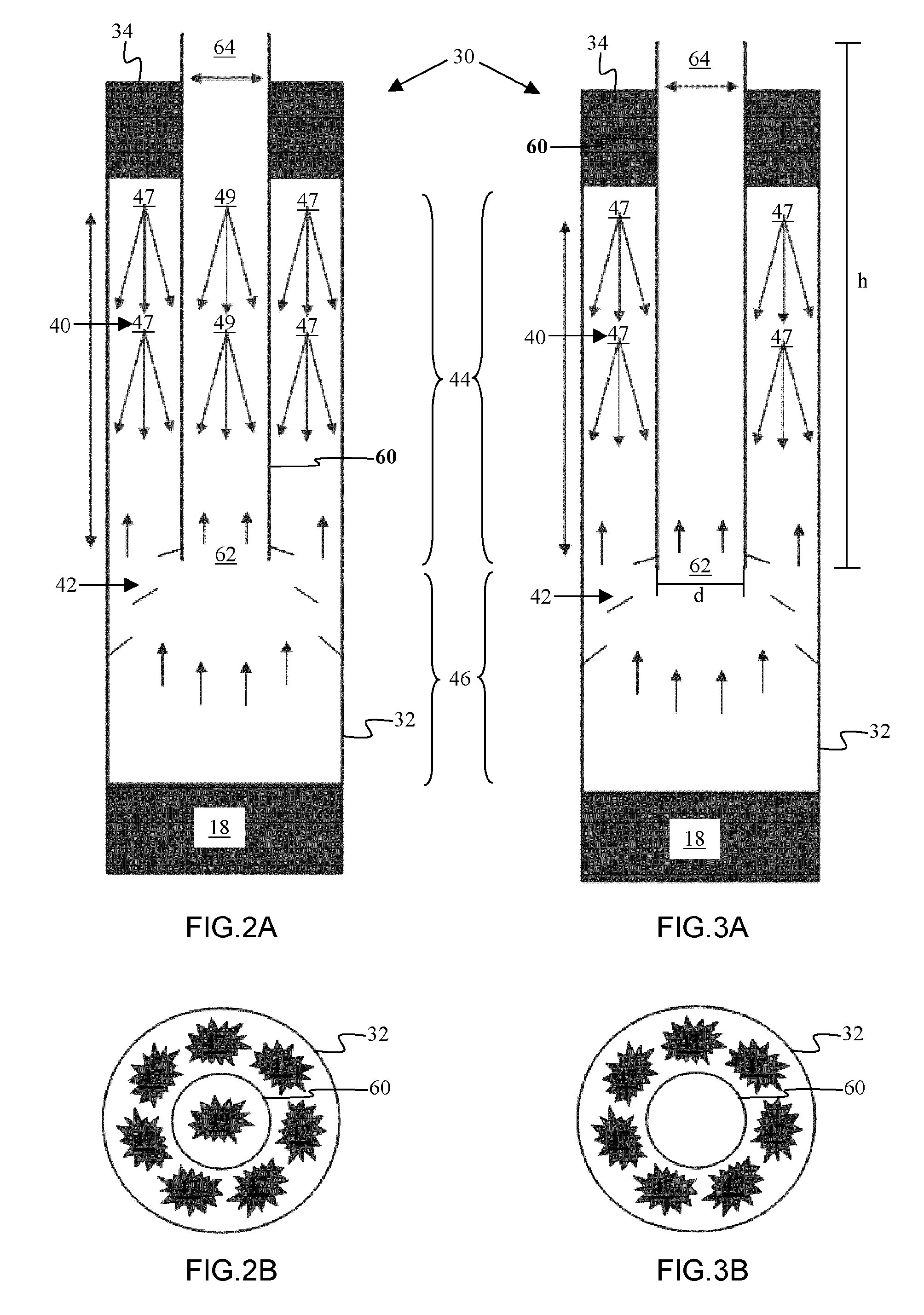Steam condensation tower for a granulation installation
a technology of granulation installation and steam condensation tower, which is applied in the direction of manufacturing tools, lighting and heating equipment, furniture, etc., can solve the problems of cyclic production of molten materials in metallurgical processes, low steam condensation capacity, and inability to handle the full steam flow, so as to achieve more reliable evacuation and low additional cost
- Summary
- Abstract
- Description
- Claims
- Application Information
AI Technical Summary
Benefits of technology
Problems solved by technology
Method used
Image
Examples
first embodiment
[0020]For illustrating the present invention, FIG. 1 shows a diagrammatic view of a granulation installation 10 designed for slag granulation in a blast furnace plant (the plant not being shown). Generally speaking, the installation 10 thus serves to granulate a flow of molten blast furnace slag 14 by quenching it with one or more jets 12 of comparatively cold granulation water. As seen in FIG. 1, a flow of molten slag 14, inevitably tapped with the pig iron from a blast furnace, falls from a hot melt runner tip 16 into a granulation tank 18. During operation, jets of granulation water 12, which are produced by a water injection device 20 (often also called a “blowing box”) supplied by one or more parallel high-pressure pump(s) 22, impinge onto the molten slag 14 falling from the hot runner tip 16. A suitable configuration of a water injection device 20 is described e.g. in patent application WO 2004 / 048617. In older granulation installations (not shown, but encompassed), molten sla...
PUM
| Property | Measurement | Unit |
|---|---|---|
| height | aaaaa | aaaaa |
| height | aaaaa | aaaaa |
| diameters | aaaaa | aaaaa |
Abstract
Description
Claims
Application Information
 Login to View More
Login to View More - R&D
- Intellectual Property
- Life Sciences
- Materials
- Tech Scout
- Unparalleled Data Quality
- Higher Quality Content
- 60% Fewer Hallucinations
Browse by: Latest US Patents, China's latest patents, Technical Efficacy Thesaurus, Application Domain, Technology Topic, Popular Technical Reports.
© 2025 PatSnap. All rights reserved.Legal|Privacy policy|Modern Slavery Act Transparency Statement|Sitemap|About US| Contact US: help@patsnap.com



